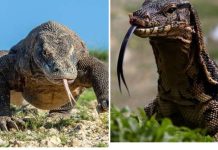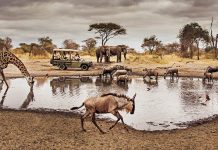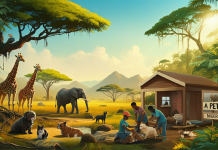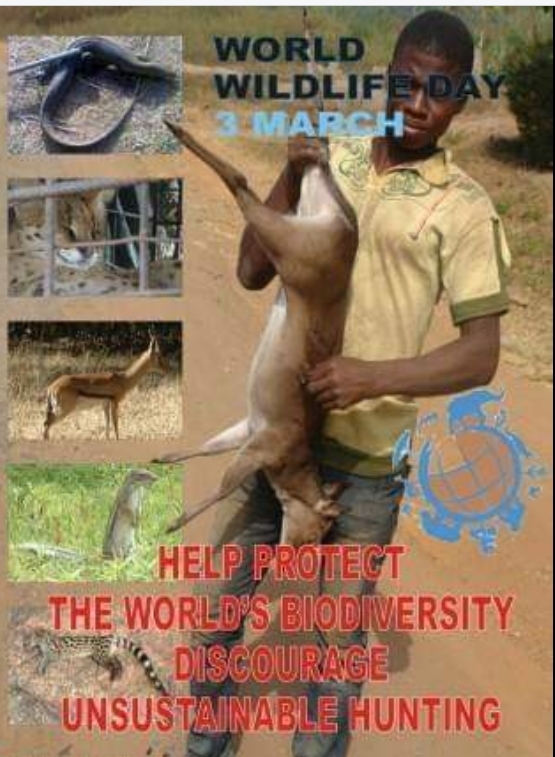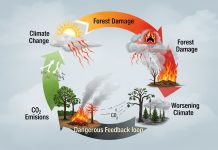By Babajide Agboola
What is West Africa, most especially Nigeria, doing to conserve its wildlife population for the next generation? Crave for bushmeat is driving a lot of wildlife into extinction. For example, the pangolin and blue duiker found in the southwestern part of Nigeria; the only population of klipspringer in West Africa found on the Jos plateau and the last pack of African wild dogs in the sub-region found in Gembu are all under the endangered animal list but hunters are having fun hunting them for the bushmeat trade.
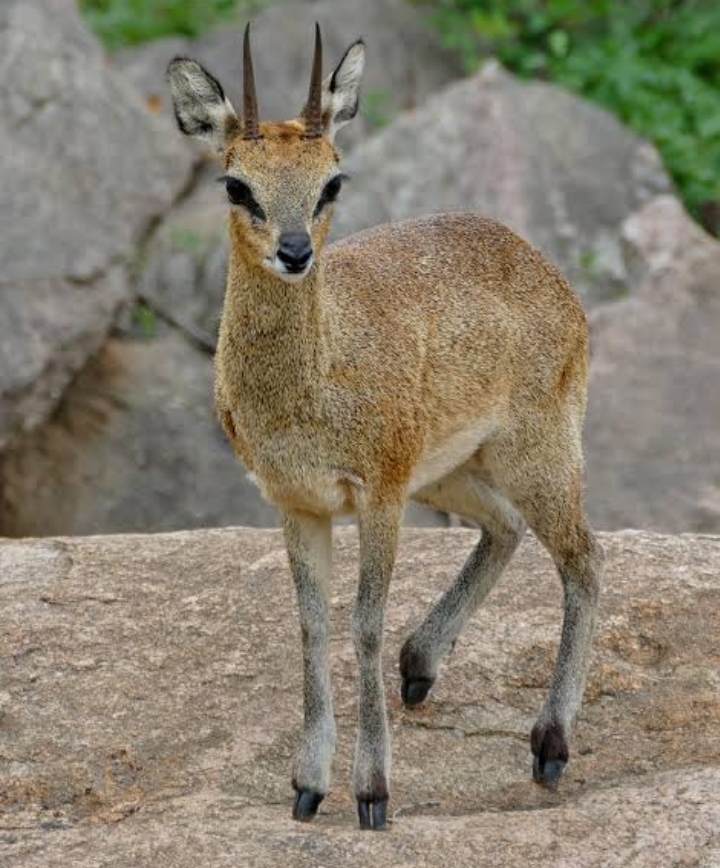
Although like shoppers in wealthy countries who pay extra for meat from free-range, organically raised animals, many urban dwellers in West Africa prefer bush meat which shows status and respect for tradition. Bushmeat supplies are dependent on a supporting ecosystem that is being disrupted in many parts of the country due to rapid population growth. The survival of our wildlife is a matter of grave concern to all of us in Africa. These wild creatures and the wild places they inhabit are not only important as a source of wonder and inspiration but are an integral part of our natural resources and of our future livelihood and well being.
Read also: Nigeria’s environmental problems — The ringworm and leprosy
The overexploitation of African wildlife for human consumption has mushroomed into a crisis of global proportion. In forests in West Africa the increase in logging and mining activities has helped fuel a dramatic explosion in the hunting of wild animals, including many threatened and endangered species. Unsustainable quantities of wild meat are now reaching large population centres, in turn driving further demand. Bushmeat networks extend as far away as London, Paris, Atlanta, and Washington, D.C., where eating wild animals is a status symbol in certain communities. The international trade in wildlife as pets to Europe and animal parts to the Far East is also fanning the flame with lack of enforcement and zeal on the government of the sub-region the biodiversity is being lost. All this occurs even though the majority of the trade is illegal both within nations and by international law/treaty.
Impact of the bushmeat “industry”
Spread of diseases: It should be noted that bushmeat can serve as a vector for the spread of highly infectious diseases such as Ebola, monkeypox to both human and domestic animal population. The source of Ebola is far from unknown. Apes are known to be the bearer of the virus, as well as human beings. They can mutually infect each other.

Photo: WCS Congo
Besides apes and human beings, also plant, rodents and fruit-eating bats may be the source of the viral disease. It is known that the killing of apes for the bushmeat trade helps to spread the disease. Not by way of eating, but via the hunters who have touched the dead animals and women who prepare the food. The infection spread through blood, sweat and urine. There is evidence that one of the recent outbreak of the Ebola virus in the Congo appears to have resulted from human handling of apes for the bushmeat trade.
At present, the quantity of bushmeat exported from Africa to Europe and the United State is small relative to that which is consumed in the continent, anecdotal reports suggest that such exports may be widespread and may pose a risk of transmitting emerging diseases to the wider world. For example, in November 2003 there was an outbreak of monkeypox in the Midwest of the United State attributed to infected rodents imported from Africa thus, the ban on the importation of all African rodents dead or alive by the U.S. Food and Drug Administration.
Read also: Vietnam, Hong Kong seize 13,300kg ivory, others from Nigeria
A threat to food security: Rural communities all over Africa are historically dependent on the exploitation of natural resources most especially wildlife as a primary protein source and have hunted sustainably for generations. For most people living in the forest, bushmeat is one of the few sources of protein available, along with locally caught fish. Today’s bushmeat “industry” is depriving these communities of their basic nutritional needs, contributing to disease risk (especially when immune systems are depressed), and raising longer-term food security concerns. The Pygmy populations of Central Africa are a good example of an entire culture that is at risk.
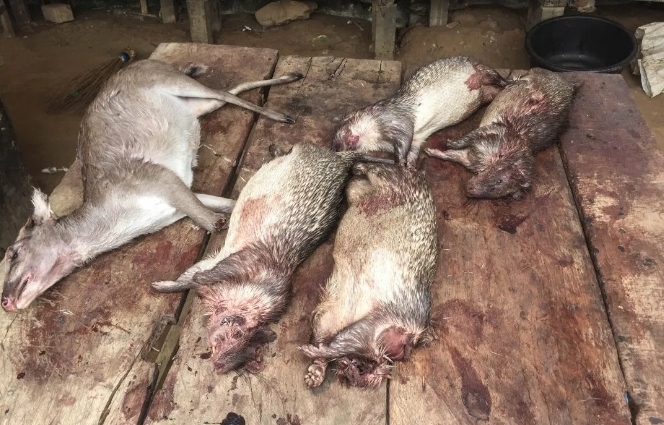
Photo: findingae.com
Major environmental crisis: The unsustainable commercial harvesting of Africa’s wildlife is the singular greatest threat to Africa’s biodiversity. It has very rapidly eradicated almost all large mammals from unprotected areas in West Africa and threatens to do the same over the next 20 years in Central Africa. As this occurs, species for which the public in Europe and the United States express particular concern, such as the elephants, lions and the great apes, are also put at great risk. In Gabon, approximately 18 million kilogrammes of bushmeat are traded every year, with an estimated turnover of Euro 50 million accounting for some 2 percent of the countries non-oil GDP.
At this point, it should be noted that the extinction of key species as a result of overhunting threatens irreversible ecological change. Take for example the loss of fruit eaters within the tropical forests alters the seed dispersal patterns of up to 80 percent of tree species. This would result in the change in forest composition and potentially alter the rate of carbon sequestration. Loss of grazers could have an equivalent impact on savannas’ ecosystem structure and function.
Possible ways out
A breeding program for wild animals has tamed the wild into “domesticated” animal, which on the long-run changes the authorities relating to its management. Some school of taught may say that this type of practice introduces a genetic erosion or variation and docility which would invariably influence meat production. The need to stimulate the rural economy through wild animal breeding programs to promote food security for the ever-growing population in Africa is more important and outweighs any demerits of this practice.
In order to achieve food security through bush meat production, Africa has to engage in active capacity development in terms of training the trainers in the improvement of the rural economy to stimulate rapid economic growth, poverty alleviation and political stability within the continent. Effort should be made by different governments to define specific strategies for achieving these goals. Such efforts could include (1) conservation education in the National Programs of Public enlightenment; (2) supporting community conservation programs as well as promoting representation of rural communities in monitoring existing wildlife conservation programs;
(3) introduction of Wildlife Resources utilization programs with local community participation thus basing planning and development on grass-root consultations; (4) provision of sustainable and affordable alternative supplies of resources; (5) putting in place mechanisms to involve and authorise local people as resource managers in decision making and wildlife resources management operations while allocating a substantial percentage of the resulting/accruing revenue to them for use as social amenities; (6) encouraging and supporting activities of organised private sectors and non-governmental organisations involved in wildlife resource conservation efforts and giving national recognition to successful conservation initiatives at the local levels.




